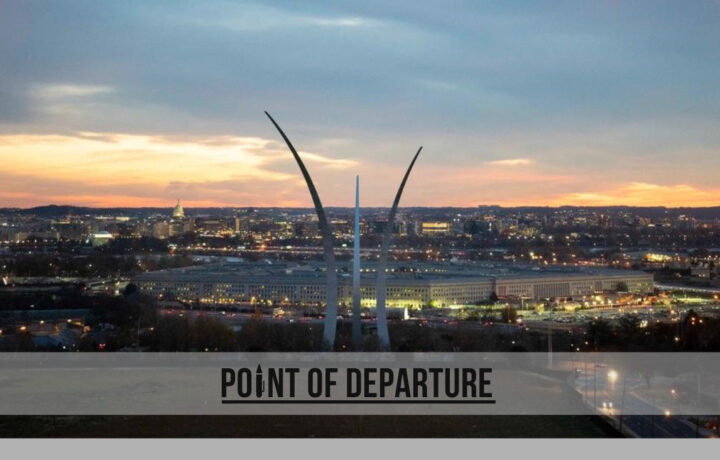A long time ago, on an Army post far, far away…
It was the spring of 1992, and I was busy preparing to move on to my next assignment, what is now called the Captain’s Career Course for a second round of professional military education and a follow-on assignment somewhere in Europe. I was in my office when the STU-III on my desk rang; it was the division security office – there was a problem with my security clearance that needed to be resolved. As in, I didn’t have a security clearance.
The Mother of All Oopsies
Somehow, in the maze of bureaucracy that surrounds the clearance process, my original SF-86 had languished without action. No background investigation had been conducted; no temporary clearance had ever been initiated. There was no explanation for the oversight. I simply didn’t have a clearance, and without one I couldn’t proceed to the career course, which required a minimum of a Secret clearance.
With nearly five years of service under my belt, I’d deployed to war, participated in any number of classified exercises, and had access to Secret-level information on multiple occasions. But I was still concerned. I hadn’t exactly been a Boy Scout growing up and I worried that even a cursory background investigation might pull any number of skeletons out of the closet.
Nevertheless, the background investigation returned without issue and my Secret clearance was awarded with time to spare. Like the Beverly Hillbillies, we packed up the car and moved the family, departing for yet another Army adventure.
A few years later, it was time to take on a Top Secret clearance and the deeper background check that came with it. Would my mom divulge the not-so-secret collection of Playboy magazines she’d found in my closet in ninth grade? Would my junior high science teacher reveal the time he caught me with notes written on the palm of my hand during an exam? And what about that time I joined Columbia House and didn’t fulfill my membership obligation? But the process was completed without a hitch and my clearance was granted.
And that’s where the fun began.
The Good, The Bad, and The Ugly
Truth be told, you can’t have a security clearance for decades and not walk away with a few stories. Some will never see the light of day for obvious reasons, others are best told over a cold beverage after a long day of safeguarding our nation’s deepest, darkest secrets.
The planning for the 2003 invasion of Iraq provided many of those stories. Initially conducted at a compartmented level, the planning involved only a handful of people with specific code word access. Secreted away in a SCIF at an undisclosed location, we debated not just the merits of the operation, but the initial operational approach, which I loudly argued was deeply flawed. To be fair, I was more than a little grumpy at the time; let’s just say I helped plan that invasion with a bag of frozen peas in my lap.
When we finished our work, I filed the information away in the back of my mind and never spoke of it again with anyone not read onto the compartmented program. As the plan matured and we moved closer to war, more people were read on and granted access. One of those was our division transportation officer, who by all appearances failed to grasp the necessity of safeguarding information that the disclosure of which could cause “exceptionally grave” damage to national security. On no fewer than three occasions, he either failed to secure printed material related to the invasion or discussed it on an unsecure phone line (and on speaker). The security manager had a field day with his clearance.
A year after that initial planning session, we were in the midst of our final preparation for deployment when I was reminded again why it’s important to safeguard that kind of information. As we were completing those preparations, I was confronted by another officer, angry because he hadn’t known sooner. “You weren’t cleared to that level. I couldn’t tell you,” I replied simply. “But I’m your boss,” he answered. “That doesn’t change anything,” I said. “I couldn’t tell you. You weren’t read on.” His irate response was all I needed to hear: “I needed to prepare my family for this.” Some people just shouldn’t be trusted with classified information.
You Can Take it With You
After nearly thirty years in uniform, I finally reached that point where it was time to throw my boots over wire and call it a career. Carrying a Top Secret clearance for over twenty of those years wasn’t anything I consciously thought of until it came time for final outprocessing with the local security manager. Sitting across the desk from me, she looked on her monitor and said, “I’m going to need some help. You’ve had access to a lot of programs, and I can’t read you off of them all.”
Once that hiccup was resolved, I was on my way with another signature – and an intact clearance – in hand. One of the positive aspects of maintaining a security clearance is that you can take it with you. Even when you retire, that clearance can remain effective for up to two years, although it comes with a hook: you have to keep your mouth shut. You’re never allowed to disclose any classified information to which you’ve had access. Which, to be completely honest, isn’t that difficult if you’ve been a good steward of those secrets all along.
While I didn’t make use of that clearance in my second career, it was there if I needed it. And I stayed true to my obligation: what was in the vault stayed in the vault. Especially those stories I’d love to tell but can’t.




